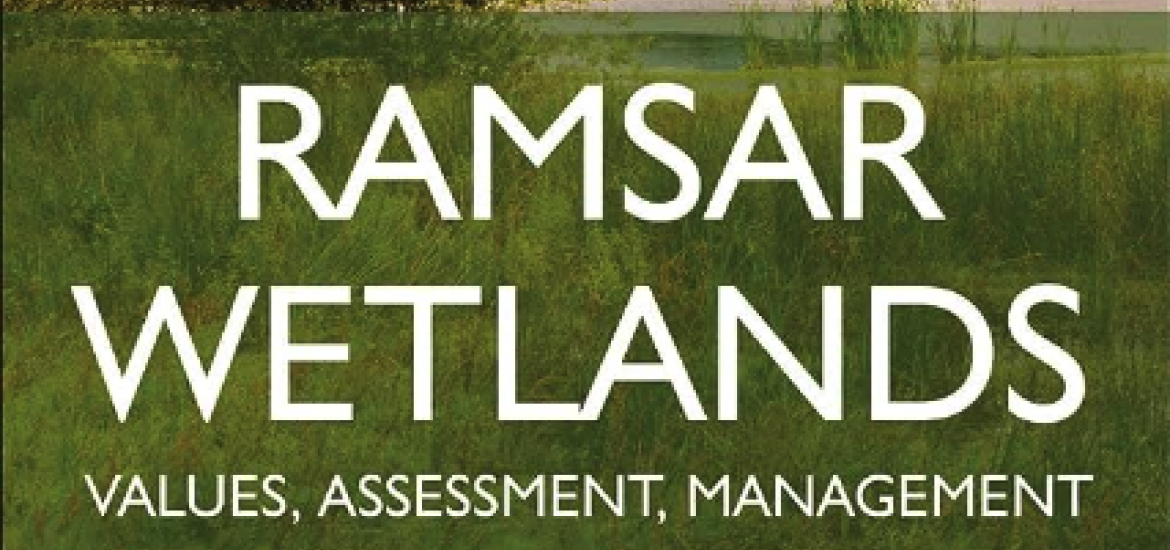- Home
- All News Overview
- Ramsar Wetlands: Values, Assessment, Management

Monday, 4 September, 2023
PAGES congratulates former Scientific Steering Committee member, Peter Gell, and his co authors Nick Davidson and Max Finlayson on the publication of their book "Ramsar Wetlands: Values, Assessment, Management".
The Elsevier volume on "Ramsar Wetlands" was very much driven by the collaborations developed at a PAGES meeting in 2014 in Australia, and built upon through the Aquatic Transitions working group.
"It is an inter-disciplinary volume and has paleo chapters (Mills et al., Riedinger-Whitmore et al.) and other contributions integrated with ecological assessments and management."
About the Book
A synthesis of 50 years of global efforts to understand wetlands and manage their ecological, social, cultural, and economic importance, to ensure their conservation, wise use, and role in the global water cycle and in mitigating our changing climate
Key Features
- Answers questions on the responsibilities and roles of signatory nations to the Ramsar Convention, including how it may deal with ongoing and emerging causes of wetland change;
- Addresses ongoing challenges of reporting and managing wetland change;
- Provides a multidisciplinary approach and details the wise use principle that underpins the convention.
Description
Ramsar Wetlands: Values, Assessment, Management addresses the approaches, successes and limitations of the Ramsar Convention in a changing world, how recent approaches to wetland monitoring and management can contribute to improving wetland state, what the future holds for wetlands and their wise use, and what the Ramsar Convention needs to do to achieve future successes. The book presents a unique outlook on a range of issues, addressing considerable advances in our understanding of wetlands, their great environmental, social, cultural and economic importance, their role in maintaining the global water-cycle, and in mitigating and adapting to changing climates.
No other book has yet taken this broad look at the past, present and future of wetlands and the Ramsar Convention. From aquatic ecologists, environmental scientists and engineers, to water resource managers, conservation agencies, and land management planners, this comprehensive guide is a beneficial tool in understanding wetlands.
Table of Contents
- Gell et al. ‘An Introduction on the Ramsar Convention on Wetlands’
- Gardner et al. ‘Ramsar Convention Governance and Processes at the International Level’
- Gardner et al. ‘Ramsar at the National Level: Application and Incorporation into Domestic Law’
- Davidson et al. ‘The Extent and Distribution of the World's Wetlands’
- Milton et al. ‘The Distribution of the World’s Internationally Important Wetlands and their Contribution to Global Protected Area Goals and Aichi Biodiversity Target 11’
- Fennessy et al ‘Linking Wetland Ecological Processes with the Delivery of Ecosystem Services’
- Simpson et al. ‘Ecosystem Services’
- Riedinger-Whitmore et al. ‘The response of Wetlands to Long-Term Climate Change’
- Davidson et al. ‘What's Happening to the World's Wetlands?’
- Mills et al. ‘Cultural Landscapes: Human Impacts on Wetlands’
- van Dam et al. ‘What’s driving wetland loss and degradation?’
- Marazzi et al. ‘Wetland Monitoring: Understanding Variability and Change in Ecological Condition’
- Newal and Fisk ‘Trajectories in Wetland Condition: Setting Limits of Acceptable Change’
- McInnes et al. ‘Management Effectiveness of Wetland Protected Areas’
- Herb and Finlayson ‘Investing in Wetland Restoration: Practical Guidance and Looking Ahead’
- Pritchard ‘Human Culture and its Evolving Place in the Ramsar Convention’
- Loures et al. ‘International Governance of Water for Wetland Conservation’
- Finlayson and van Dam. Climate Change and Wetlands - Vulnerability, Adaptation, Mitigation, Resolutions and Scientific Societies’
- Kumar et al. ‘Wetlands as Social Ecological Systems: Bridging Nature and Society’
- Gell et al. ‘Wetlands and Future Change - Implications and Opportunities with the Ramsar Convention’
> Paperback ISBN: 9780128178034
> eBook ISBN: 9780128178041
> Download flyer